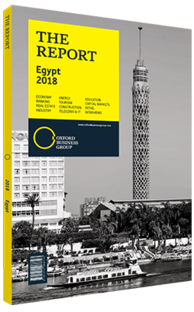Tax and fiscal policy changes in Egypt affect the construction sector
Contractors in the Egyptian market have been among the hardest hit by the government’s ambitious reform agenda over 2017. While Cairo’s efforts to put the national economy on sounder footing will likely bear fruit, there has been short-term pain in the form of high inflation and increased cost pressures on construction firms. In this period of uncertainty, many contractors have not only found it difficult to price risk, but also suffered losses as a result of unexpected increases in input prices on existing projects.
As part of the $12bn, IMF-backed reform programme, the administration under President Abdel Fattah El Sisi has introduced a value-added tax law, reduced fuel subsidies and floated the Egyptian pound over the 2015-17 period. All these moves have had a sizeable impact on construction costs, with the pound devaluation increasing the price of some building materials, such as certain steel and cement products, by as much as 100% in less than two months. A second increase in the price of petroleum products in July 2017 also led to a 10-15% bump in construction costs.
These policy decisions, often introduced with little notice, have significantly affected the sector. “It’s affected cash flows,” Sherif Sweillam, director of business development at Gleeds, a property and construction consulting firm, told OBG. “There are several lump-sum contracts in the market, so there are lots of negotiations going on over variations.” Indeed, lump-sum contracts are most common in the domestic market, and while there are some re-measurable contracts, the cost-plus model is not commonly used.
Price Pressure
These challenges are being worked out within the sector, and there has been no recourse to arbitration and the legal system. Indeed, the impact of cost escalation varies on a case-by-case basis. For example, some contracts are priced partially in Egyptian pounds and partially in US dollars, which lessens the effect. Nonetheless, in broad terms there are pressures pushing up the price of construction. “We’ve seen claims from contractors seeking an increase of 35-45% on contracts, and some firms have agreed on terms upward of 20-40%,” Sweillam told OBG.
The inflationary environment – which saw the headline rate peak at 32.95% in July 2017, before moderating to 21.9% in December that year – is causing input cost pressure across the board, from materials to labour. While mechanical and electrical costs have seen the biggest increase, all materials are experiencing cost hikes. Likewise, the workforce has been significantly affected by the prevailing economic conditions and is seeking wage increases. “Contractors’ margins are being squeezed, but this is the new normal, so people are getting back to needing to be profitable,” Sweillam told OBG. “Cost pressures have had more of an impact on ongoing projects than on new ones. However, there is still some confusion on how to price contracts under the current circumstances.”
Compensation
There has been notable fallout from this uncertain risk environment. According to the Egyptian Federation for Construction and Building Contractors, 2400 construction firms went bankrupt between the flotation of the Egyptian pound in November 2016 and July 2017. The government tried to address this by introducing a compensation law in June 2017. As such, contractors that incurred losses on public projects as a result of government legislation introduced between March and December 2016 can seek compensation. According to Sahl Al Damrawi, a member of the Egyptian Federation for Construction and Building Contractors, the move saved over 5000 construction firms from bankruptcy and protected thousands of jobs.
While the legislation only applies to public contracts, it has helped to stabilise the sector and allowed many firms to plan for the future. However, while the worst may be over and contractors can begin to look forward, the uncertainty and price inflation between the end of 2016 and 2017 has left many industry players bearish, looking to avoid incurring more risks in the future.
You have reached the limit of premium articles you can view for free.
Choose from the options below to purchase print or digital editions of our Reports. You can also purchase a website subscription giving you unlimited access to all of our Reports online for 12 months.
If you have already purchased this Report or have a website subscription, please login to continue.

